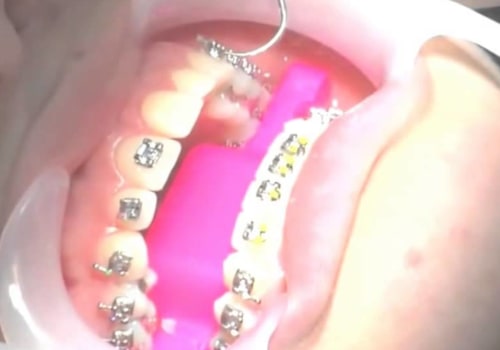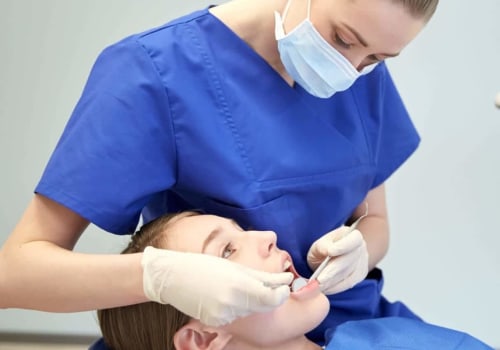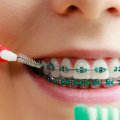The best alternatives to traditional metal braces are InvisAlign or ClearCorrect (transparent aligners). ClearCorrect is one of the most popular brands of clear plastic aligners and is best for people whose teeth are discolored, misshapen, chipped, or have gaps in between. Invisalign can correct anything from minor overbites and underbites to serious malocclusions. An orthodontist will provide a series of transparent, removable “molds” that are placed over the teeth.
Cosmetic dentistry is another alternative to orthodontic appliances. Porcelain veneers use very hard, thin shells that adhere to one or more teeth. The tooth is ground and the enamel removed. This is permanent, so if you choose veneers, you'll need to replace them every five to 10 years.
The veneer attaches to the tooth and can change its position, straighten it, or move it to fill a space. Porcelain is extremely strong and stain resistant. For unsightly front teeth, this can be a good option because, compared to orthodontic appliances, it's fast. Veneers may also be recommended for cracked, broken and heavily stained teeth.
If you have a serious condition that requires traditional care, ClearCorrect, SureSmile, 3M Clarity, and Invisalign are great options. If you only have a mild to moderate case of overcrowding or spacing, we think it's worth considering a home provider like Byte. Clear aligners are discrete, removable alternatives to traditional metal braces. When you receive these custom-made clear plastic aligners, you will receive several months in advance and will change them at regular intervals (usually every two weeks) to help place your teeth in the correct position.
The full series of aligners can take up to nine months or more, depending on the amount of alignment needed. Braces are worn for 12 to 24 months, on average. You should also wear a retainer to keep your teeth straight after treatment (at night only). Aligners for home use, also called direct-to-consumer aligners, are significantly cheaper than office aligners such as Invisalign.
The treatment is completed 100% remotely and you won't visit a dentist or orthodontist for in-person checkups. Each custom-made aligner is worn for 1 to 3 weeks in a row (more than 22 hours a day). The length of treatment depends on your specific plan. Lingual braces consist of the same components as traditional metal braces but are attached to the back of the teeth instead of the front teeth.
Traditional orthodontic appliances use a wire bent into a horseshoe shape but the wire in the lingual braces can be custom-fixed to the contour of the mouth. This process can potentially shorten treatment time. Lingual braces are placed on the back of your teeth (where your tongue clashes when you speak). Because of this, you may have temporary lisseness or interference with speech when you start treatment.
Ceramic appliances also use the same components as metal appliances but the brackets are made of tooth-colored ceramic or porcelain rather than stainless steel. This makes ceramic orthodontic appliances nearly invisible. Ceramic braces are more practical than traditional metal braces because they blend in with your teeth but they're also more expensive and tend to break more often since they're made of plastic which is less stable than metal. If you choose ceramic braces excellent oral hygiene is crucial as food and drinks can stain them.
First we'll look at the best homemade alternatives to orthodontic appliances and then we'll look at the best traditional options. If one is considering using porcelain veneers or orthodontic appliances it would be good to visit an orthodontist to find out which option would work best. If you want an alternative to in-office braces but you're intimidated by the costs of Invisalign check out ClearCorrect for an equally effective but more affordable option. If you want an alternative to braces that is cheaper and more discreet SureSmile is a great option.
However without in-person supervision and the option of placing dental accessories home aligners can treat a more limited range of conditions mainly mild to moderate cases of crowding and spacing. Veneers are a great option for correcting aesthetic dental problems including the size shape and color of the teeth. But if they're not braces then what? Fortunately current orthodontic and teledentistry technology has paved the way for new and effective options for straightening teeth. Hopefully now that you have a solid base of information about your options you and your dentist will be able to choose an option for straightening your teeth that will make you smile.
There are other options available for applying veneers that don't involve removing tooth enamel called “unprepared veneers” according to the American Academy of Cosmetic Dentistry. Another available option is unprepared veneers which according to the American Academy of Cosmetic Dentistry are placed without removing most of the tooth enamel.





